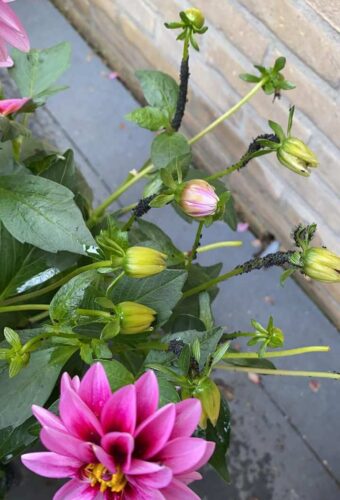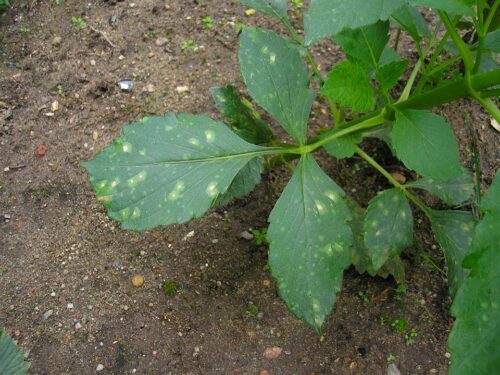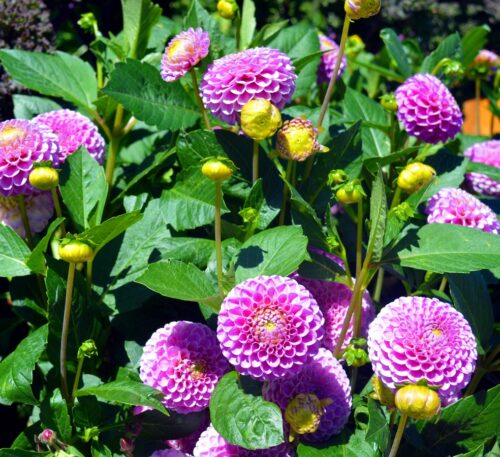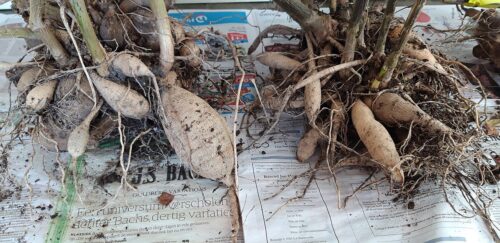Dahlias belong to the composite family (Asteraceae) and have many species.
You are viewing the mobile-adapted version of the page.
The one for tablets, laptop and desktop also provides general information, such as origin and cultivation.
Dahlias belong to the composite family (Asteraceae) and have many species. The origin of today’s dahlia is in Mexico where the original dahlia, a tall perennial, was cultivated for its edible fleshy roots. Today’s dahlias are hybrids. There are many varieties: from single flowers to orchid-like. Flowering time is from July to November or until the first night frost.
The dahlia is a frost-prone tuberous plant that should be dug up and stored in late fall. Preferably in a cool (+5°C), frost-free dry room. Not all dahlias are equally sensitive to frost.
Do not remove the tubers from the ground immediately in autumn: the dahlia still draws nutrition from the above-ground green parts. Once the leaves start to wither, the tubers can be taken out of the ground.
The overwintered tubers can be planted again after mid-May when the risk of night frost has decreased. When planting, make sure the dried out main stem is at the top. Planting depth is only ten centimeters. Dahlias like a nutritious, not too wet soil in a somewhat sheltered spot.
Multiply dahlias by tearing the tubers and planting them. Dahlias like to be in the sun and water regularly.
Bugs

Aphids on leaves and stem.
Holes appear in the leaves, sometimes they are completely eaten away: snails and slugs.
Flowers, leaves and buds are eaten: the earwig. Sometimes they hide in the flowers.
Fungi & diseases
Brown spots appear on the leaves, the spots spread and grey fluffy mold. Buds and leaves dry out: Gray mold (Botrytis).

Yellow-green spots appear on the leaves, multiply and turn gray: Entyloma.
Plant wilts and leaves yellow. White (sometimes pink or brown) mold develops on stem and tendrils: Fusarium wilt (Fusarium oxysporum) or Verticillium wilt Verticillium spp).
Plants wilt, leaves die and brown or black spots appear on roots: Black scurf and stem canker (Rhizoctonia).
Light green to yellowish streaks appear on the leaves: Mosaic virus.
Other
Dahlia suddenly falls over and leaves wither: the stems have been gnawed off just above the ground: mice.


